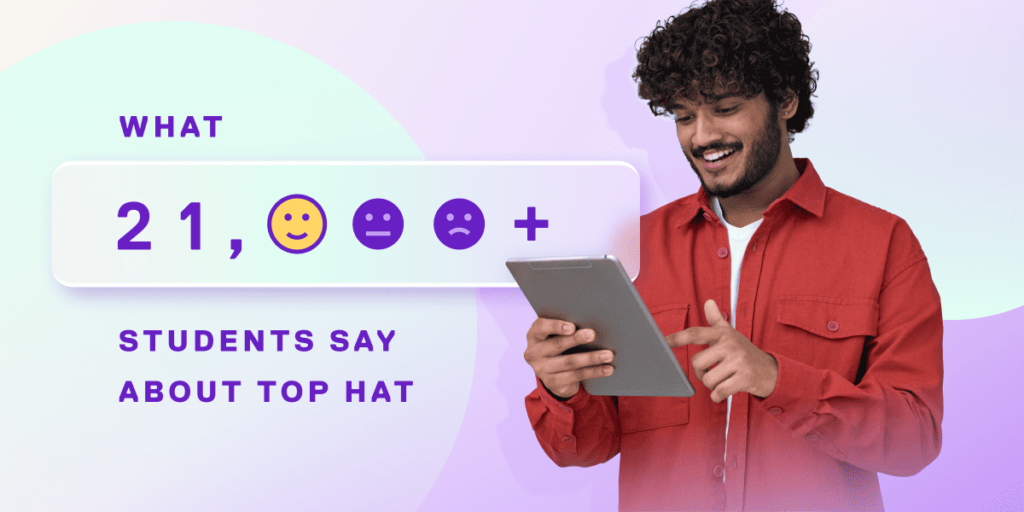It’s been over a year since the pandemic upended higher education—and we’ve been tracking student sentiment throughout. For our latest report, we surveyed 3,052 undergrads to understand what’s worked, what hasn’t and how the past year is shaping expectations as they head back to campus. The biggest takeaway? In weighing the return on their tuition dollars, students are putting a premium on the quality of instruction. Download our new report to uncover what students expect from the learning experience this fall.
Raising the bar on learning
The campus experience has long been the mainstay in marketing higher education to students. Yet for many, hefty tuition bills and a year of remote learning have elevated the importance of what happens inside the classroom. When it comes to realizing the value of their higher ed investment, campus amenities like living in a residence or having access to extracurricular activities appear to matter less than you might think. The role of faculty, on the other hand, specifically mentorship, providing helpful feedback and creating a learning community are significantly more important to current students. While schools have rarely competed on the basis of educational efficacy to attract students, those days may be numbered.
Students want options (and technology)
The perception that remote learning is less effective than in person has held pretty much constant for the past year. What’s most troubling is that only 19 percent of students say the experience has been worth the cost of tuition. A return to the classroom will no doubt help improve this sentiment, but we shouldn’t be too hasty in shutting down our Zoom screens altogether.
While 54 percent of students say they prefer to learn in person, 46 percent want to retain at least some elements of online learning. Whether blended, hyflex or having asynchronous options, flexibility is an important value driver.
Students also want to see technology incorporated into the physical classroom. A majority (56 percent) said they would like in-class engagement tools such as live chat, discussion and polling software to make class time more engaging. And a similar number (53 percent) want the opportunity to work with interactive digital textbooks that allow them to assess their learning as they go.
Rather than hit pause, faculty and institutions should build on the momentum by refining their use of technology to make learning more flexible and engaging, inside the classroom and out.
Community and caring make a BIG difference
Pandemic life has taken a toll on most of us, but the impact has been particularly acute for students. Lockdowns and remote learning have no doubt exacerbated feelings of loneliness and isolation (66 percent) and, sadly, a majority are grappling with anxiety (84 percent) and depression (58 percent). While far from a salve for all that ails, caring faculty and efforts to build community in the classroom do make a difference.
Students who agree they have at least one instructor who cares about them as a person are far more likely than the average to say they are engaged and motivated in their coursework, to recommend their school, and to say they see value in their higher ed investment. The effects of fostering community are equally dramatic, as is the impact of faculty who make an effort to provide timely, helpful feedback.
Creating environments where students feel a sense of fellowship and are comfortable speaking up and showing vulnerability is the backbone of substantive learning. Little wonder two-thirds say they want tools to stay connected with peers and instructors, even once it’s safe to return to campus.
Make learning relevant and transferable
Today’s students are much more inclined to view the purpose of college as a means to securing a good job rather than a quest for knowledge. They don’t want to be spectators in their education, either. This is a generation that craves to learn by doing and to understand the connection between theory and practice. And students are unequivocal about their ideal learning experiences:
- 76 percent want to apply learning to address real-world problems
- 79 percent want to develop transferable skills
- 67 percent want to learn through collaboration and interactive activities
The outsized impact a pedagogy like active learning has on student engagement is well known and our own findings only bolster the case even further. Students who say their learning experiences are marked by discussion and interaction—and that challenge them to apply knowledge—are much more likely to be motivated in their studies. Institutional leaders take note: these same students are also more likely to say their education is worth the cost of tuition.
Preparing for the pandemic freshman class
The freshman class of 2021/2022 may be far less prepared for the transition to college than any previous generation. Many will have completed their final year of high school in front of a Zoom screen instead of a classroom. To set the table for success, faculty need the ability to gauge student progress early and often.
So-called ‘small data’ or insights from ‘always-on assessments’ such as low-stakes quizzes and polls will help instructors spot early signs of struggle and provide the mechanism to deliver the feedback students need. Having the tools to demonstrate caring and provide support at scale is especially important in large introductory courses where students are at their most vulnerable and their success is least assured. More than ever, waiting for the results of a high stakes midterm exam may be too little, too late.
This has been a watershed year in so many ways. Amid the missteps and reflecting, the good news is that we see clear evidence of what is working. The challenge now is applying these insights along with the growing comfort faculty have achieved using technology to deliver high-quality learning experiences consistently for all students.


